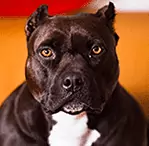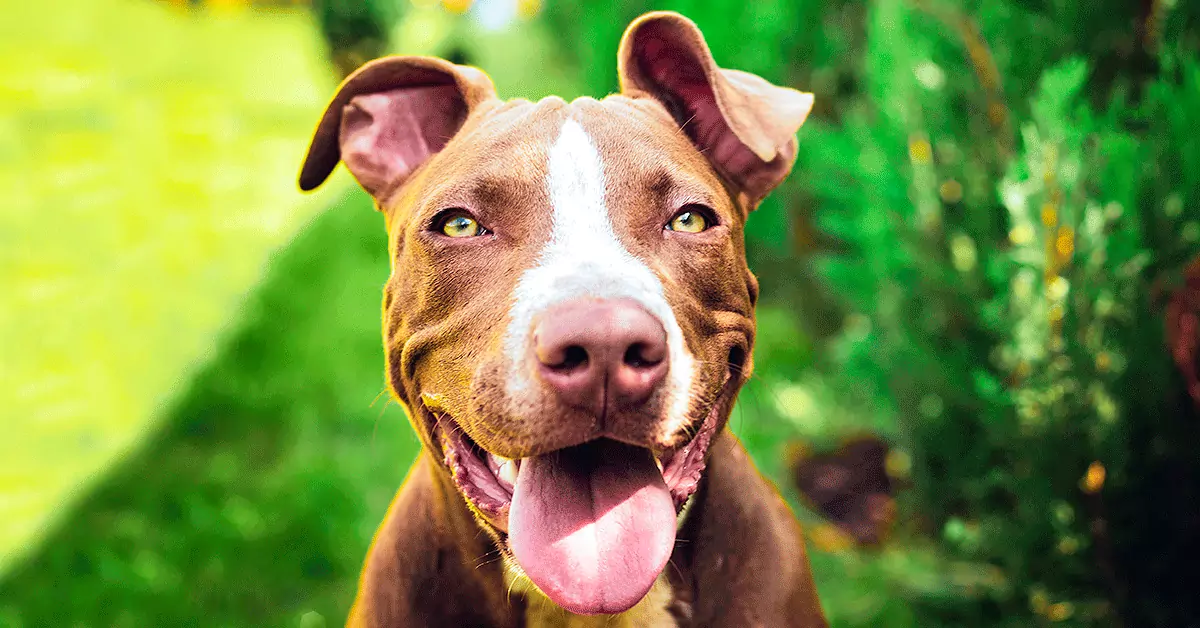
Meet the American Pit Bull Terrier
Couch Cuddler
Courageous Canine
Best Fur Friend
My Many Looks
My Breed Characteristics
Furbulous Fact
As I Grow Up
History of My Breed
Care Tips
Training Tips
Personality
Courageous
Friendly
Loyal
Group
Terrier
Origin
United States
Life Span
10-15 Years
Breed Popularity
Height Range
17-21 inches
Weight Range
30-60 pounds
Coat Details
Type
Short
Texture
Smooth & Stiff
Features
Colors
Red, Blue, Brown, Grey, Black, White, Black & White, Black & Tan, Brindle, Yellow
Hypoallergenic
Cost to Buy
$500-$2,000
Lifetime Care Cost
My Many Looks
My Breed Characteristics
Furbulous Fact
As I Grow Up
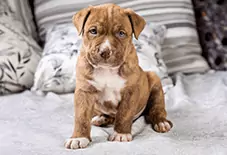
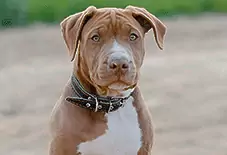
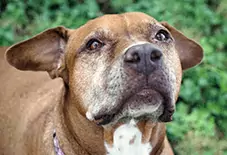
History of My Breed
Care Tips
from Dr. Jessica Greenberg, Associate VeterinarianBe on the lookout for lethargy.
Lethargy is the hallmark symptom of a red blood cell parasite called Babesia, to which Pitties are especially prone. It can be passed down from the mother, as well as picked up through the dog’s environment. Babesia can lead to anemia if not treated in time, so make sure you work with your vet if you notice any lethargy in your pup.
Give your Pittie enough exercise – but don’t overdo it.
Pit Bulls are an energetic breed that need plenty of exercise. Their needs vary by age, and they’ll need more activity while they’re puppies. Just observe your pup’s energy levels during and after activity, and make sure you don’t overdo it.
Make sure you stick to a strict vaccine protocol.
Pitties are highly susceptible to Parvovirus, which is a gastrointestinal disorder that can be fatal if left untreated. Make sure you and your Pit pup stick to strict vaccine booster protocols, starting as early as six weeks of age. From there, they should receive booster shots every three weeks until 18-20 weeks of age.
Training Tips
from Dr. Jessica Greenberg, Associate VeterinarianTeach your Pittie to use their jaws gently.
Pit Bulls are notorious for their strong jaws and powerful bite, and it’s important to start teaching them gentleness and precision early on. While you can’t eliminate their desire to chomp, you can teach them what’s OK to chomp on: their designated toys. You can also help them soften their bite by hand-feeding them treats and kibbles while they’re young. If there's a bite that feels hard – even if it doesn't touch skin – pull the treat away and then wait for them to take it gently.
Discourage your pup’s guarding behaviors.
Pitties can be protective about their food if they’re left to their own impulses around feeding time. The trick is teaching your Pit pup at an early age to view you as the food resource – and that the human is the one in control. For example, if you put down a bowl of food and your pup hasn’t finished it after 20 minutes, don’t let the bowl linger! Remove the bowl from sight after 20 minutes, so they learn to recognize their human as the source of the food.
Give your Pittie plenty of physical and mental exercise.
Train your Pit pup’s mind by getting creative with feeding time. Instead of feeding them in a regular bowl, try putting their food in a Kong toy. These require dogs to use their jaws more intelligently and use their creativity to get the food out, so it ends up being a little bit of play and a little bit of exercise, too.
My Many Looks
My Breed Characteristics
Furbulous Fact
As I Grow Up
History of My Breed
Care Tips
Training Tips
-
Personality
Courageous
Friendly
Loyal
-
Group
Terrier
-
Origin
United States
-
Life Span
10-15 Years
-
Breed Popularity
-
Height Range
17-21 inches
-
Weight Range
30-60 pounds
-
动物皮毛
Type
Short
Texture
Smooth & Stiff
Features
Colors
Red, Blue, Brown, Grey, Black, White, Black & White, Black & Tan, Brindle, Yellow
-
Hypoallergenic
-
Cost to Buy
$500-$2,000
-
Lifetime Care Cost



